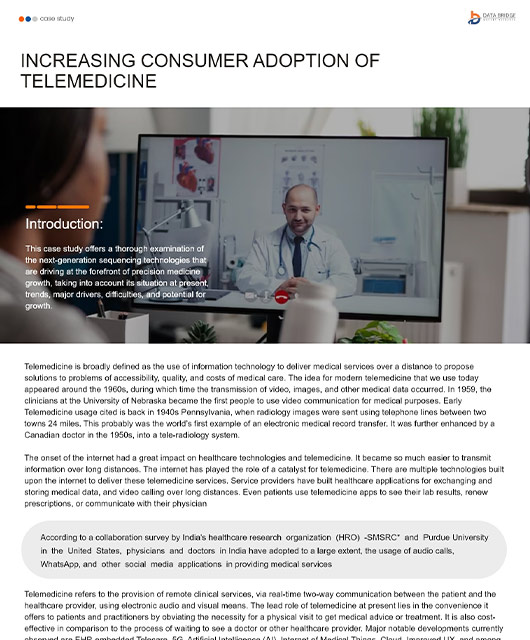Introduction:
Telemedicine is broadly defined as the use of information technology to deliver medical services over a distance to propose solutions to problems of accessibility, quality, and costs of medical care. The idea for modern telemedicine that we use today appeared around the 1960s, during which time the transmission of video, images, and other medical data occurred. In 1959, the clinicians at the University of Nebraska became the first people to use video communication for medical purposes. Early Telemedicine usage cited is back in 1940s Pennsylvania, when radiology images were sent using telephone lines between two towns 24 miles. This probably was the world’s first example of an electronic medical record transfer. It was further enhanced by a Canadian doctor in the 1950s, into a tele-radiology system.
Challenges Faced by Client:
The overarching challenge for clients is to accelerate the adoption of telemedicine among patients and healthcare providers on various sites. Some of the major criteria put forth by the client in assessing the appropriate results were as follows:
- Digital Divide: A substantial portion of the patient demographic may lack access to essential technology and reliable internet connectivity, hindering their ability to participate in telemedicine consultations
- Provider Engagement: Encouraging healthcare professionals to embrace telemedicine may prove challenging, as some may resist change or harbor concerns about the quality of care in virtual settings
- Patient Education: Informing patients about the advantages and proper use of telemedicine services is essential, as many individuals may not be well-versed in this emerging healthcare model
- Regulatory Complexity: Navigating the intricate web of telehealth regulations and ensuring compliance with healthcare laws can be a formidable task, requiring ongoing vigilance and adaptation
- Privacy and Security: Safeguarding patient data and ensuring its confidentiality during remote consultations is paramount, especially in light of potential data breaches and privacy concerns
- Integration Challenges: Seamlessly integrating telemedicine data into existing Electronic Health Records (EHR) systems and maintaining data continuity can be technically complex, requiring careful planning and execution
The client has chosen Data Bridge Market Research to address these aforementioned complex challenges to recognize the critical need to expand their telemedicine services and overcome the myriad challenges associated with their product. Our deep expertise in healthcare technology, coupled with our comprehensive understanding of the complexities surrounding telemedicine implementation, uniquely positions us to provide tailored strategies and cutting-edge solutions. By engaging with our team, the client aims to leverage our knowledge, experience, and commitment to enhancing healthcare accessibility, efficiency, and patient-centric care through the strategic integration of telemedicine into their healthcare ecosystem.



